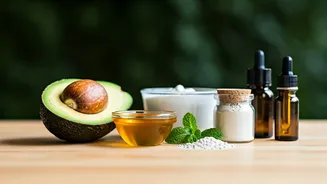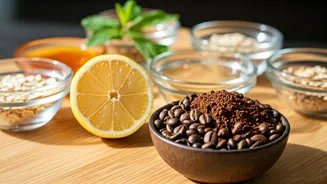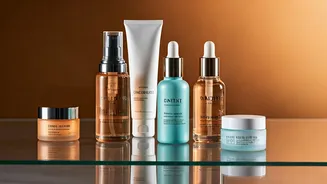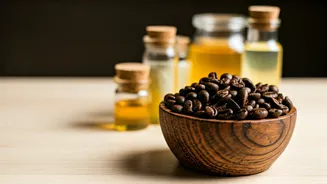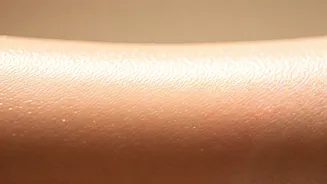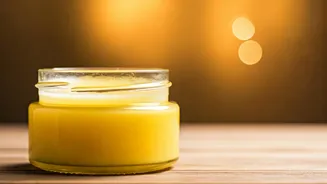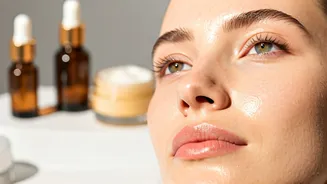Understanding Blackheads
Blackheads are a common skin ailment, often causing distress. They form when pores become clogged with a mixture of oil, dead skin cells, and debris. This
mixture oxidizes on the skin's surface, resulting in a dark, black appearance. Various factors contribute to their formation, including excessive oil production, hormonal changes, and the use of unsuitable skincare products. Recognizing the nature of blackheads is the initial step toward successful treatment and managing the skin's condition effectively. Understanding the causes and formation of blackheads is crucial in selecting the most suitable DIY masks. These masks typically work to unclog pores, reduce inflammation, and improve skin texture, offering a natural and accessible method for skincare. The key lies in selecting ingredients that offer the right properties to combat the underlying causes of blackhead formation, resulting in clearer and healthier skin.
Honey and Lemon Mask
The honey and lemon mask is a renowned remedy for blackheads. Honey acts as a natural humectant, drawing moisture into the skin while possessing antibacterial properties to help combat acne-causing bacteria. Lemon, on the other hand, is rich in citric acid, functioning as a mild exfoliant to shed dead skin cells. To prepare this mask, mix one tablespoon of raw honey with one teaspoon of fresh lemon juice. Apply this mixture to the face, concentrating on areas prone to blackheads, and leave it on for 15-20 minutes. The slight stickiness of honey allows it to adhere well to the skin, helping the ingredients to penetrate and work their magic. Rinse thoroughly with warm water, and gently pat the skin dry. Regular use of this mask can aid in reducing blackheads and promoting a brighter, smoother complexion. However, since lemon can cause sensitivity, always do a patch test before applying it to the entire face. This mask is simple to make and can be an easy way to incorporate a natural skincare regimen.
Oatmeal and Yogurt Mask
The oatmeal and yogurt mask is a gentle yet effective way to exfoliate and soothe the skin, specifically designed to address blackheads. Oatmeal is known for its mild exfoliating properties and can help remove dead skin cells that clog pores. Yogurt, particularly plain yogurt, is rich in probiotics and lactic acid, offering gentle exfoliation to clear away impurities. To make this mask, blend or grind some rolled oats until they have a fine consistency. Mix two tablespoons of this oatmeal with one tablespoon of plain yogurt. Apply the mixture evenly to the face, allowing it to sit for about 10-15 minutes. During this period, the oatmeal will gently exfoliate, and the yogurt will provide moisturizing and soothing benefits. Rinse the mask off with lukewarm water, gently massaging the face in circular motions to ensure complete removal. This mask is especially helpful for those with sensitive skin. Its natural properties work synergistically to provide a comprehensive treatment for blackheads, leading to clearer and calmer skin.
Baking Soda Mask
The baking soda mask is another popular option for fighting blackheads. Baking soda is a gentle exfoliant that aids in removing dead skin cells and clearing clogged pores. However, it's essential to use it with care, as its pH level can be quite alkaline and may be too harsh for some skin types. To prepare this mask, mix one tablespoon of baking soda with two tablespoons of water to create a paste. Apply the paste to the affected areas and gently massage in circular motions for a minute or two. Be cautious not to scrub too vigorously, as this can irritate the skin. Rinse thoroughly with cool water to ensure all the baking soda is removed. The exfoliation action of the baking soda can help to unclog pores, but it's important to follow up with a moisturizer to restore the skin's natural balance. If you have sensitive skin, it’s advisable to start by testing a small area first. Use this mask no more than once a week to avoid over-exfoliation and maintain healthy skin.
Egg White Mask
The egg white mask is a simple and effective solution, particularly favored for tightening the skin and extracting impurities. Egg whites are known for their ability to dry and tighten the skin, which can help to draw out blackheads. To create this mask, separate an egg white from the yolk. Whip the egg white until it becomes frothy. Apply a thin layer to the face and let it dry. Add a second layer once the first one has dried and allow that to dry completely as well. The drying process will help tighten the skin, potentially pulling out dirt and blackheads. Gently peel the mask off once it's completely dry. Rinse your face with warm water to remove any remaining residue and apply a moisturizer afterward to rehydrate the skin. The egg white mask can be a quick and convenient way to address blackheads and enhance the skin's texture, providing a simple yet powerful DIY skincare option. Remember that individual results may vary, and it is crucial to monitor your skin's response.
Mask Application Tips
To optimize the effectiveness of these DIY blackhead masks, it's beneficial to incorporate certain practices into your skincare routine. Firstly, it's advisable to prepare the skin by washing the face with a gentle cleanser to eliminate surface impurities. This process opens the pores, which enhances the masks' ability to work effectively. When applying the mask, use clean fingers or a soft brush to evenly distribute the mixture, ensuring it covers the areas prone to blackheads. The duration of application, typically around 10-20 minutes, is crucial to allow the ingredients to interact with the skin without causing irritation. After removing the mask, rinse your face thoroughly with warm water to remove any remnants of the ingredients. Following the mask treatment, applying a light, non-comedogenic moisturizer helps hydrate and soothe the skin, preventing dryness and maintaining its natural moisture barrier. Consistent use, combined with a regular skincare regime, will amplify the benefits, leading to improved skin clarity and a reduction in blackheads.
Additional Considerations
While these DIY masks can be very effective, it is important to consider individual skin types and potential sensitivities. Always perform a patch test on a small area of the skin before applying a mask to the entire face to check for any allergic reactions or irritation. Start with short application times and gradually increase them as your skin tolerates the treatment. If you have sensitive skin, choose milder ingredients and less frequent applications. Furthermore, maintaining a healthy skincare routine that includes regular cleansing and exfoliation is vital. Proper hydration, healthy eating habits, and avoiding harsh products can also improve the skin's health. If blackheads persist or worsen, consider consulting a dermatologist for professional advice and more targeted treatments. Remember that consistent skincare and using the correct mask for your skin type is the key for optimum results and long term clear skin.
